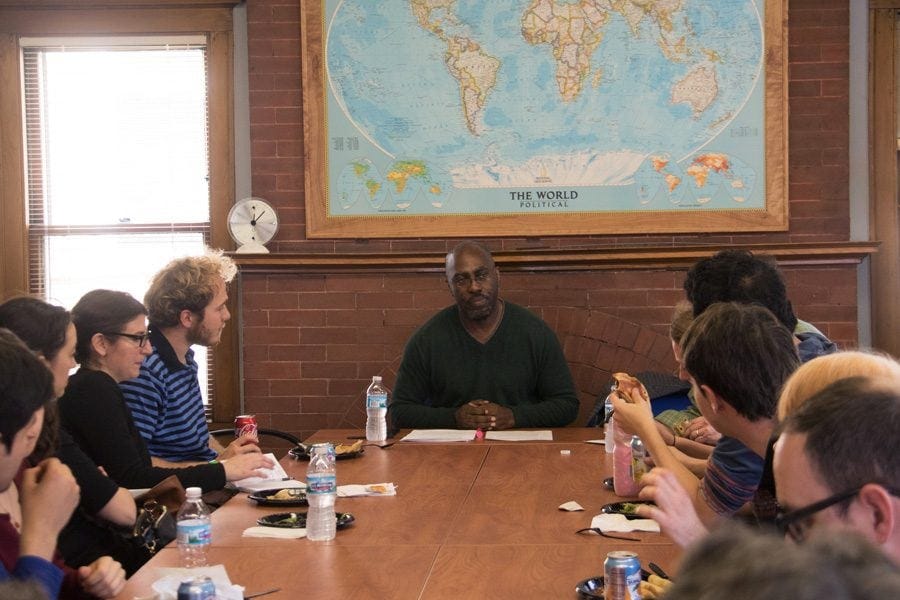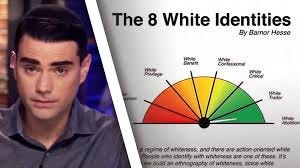Exposing Whiteness
How a teaching tool, to map the spectrum of behaviors and positions white people take toward race and racism went viral.

When former Bravo star Jennifer Welch’s furious rant about “triple-Trumped” white folks went viral recently, it struck a nerve with us, not just because of her bluntness, but because what she described was something we are very familiar with from our past interview with Dr. Barnor Hesse, Associate Professor of African American Studies, Political Science, and Sociology at Northwestern University.
What Welch laid out in her tirade, the way some white people rail against immigrants, people of color, or queer communities, while still eagerly consuming their food, music, and culture, is straight out of Dr. Hesse’s framework. He has a name for it: White Voyeurism, the enjoyment of non-white culture without solidarity with its people.
Back in 2022, when Dr. Barnor Hesse’s Eight White Identities graphic went viral in right-wing media, we reached out to him and were fortunate to land his first-ever U.S. interview for our Brown & Black podcast. Our conversation centered around his Eight White Identities with the creator himself walking us through each one, in his own words, which you can hear now in our latest episode.
The Making of a Meme: Barnor Hesse on the Origins of His Eight White Identities
Before discussing those definitions, we explored the methodology behind them, the social science that validates them, and the events that led to a student of his transforming a graphic created for a course into the oft-repeated meme and point of racial conflict it’s become. Hesse gave us a deep understanding of the history of studying behavior and why he created these identities to begin with. What we present here is an edited transcription of those two episodes, distilled into a digestible form for you to enjoy and refer to.
The Genesis of the Eight White Identities
In early 2022, a graphic outlining Dr. Barnor Hesse’s Eight White Identities exploded across right-wing media, sparking outrage from figures like Megyn Kelly and Ben Shapiro. But the framework wasn’t new it stemmed from Hesse’s decades of scholarship as an associate professor of African American studies, political science, and sociology at Northwestern University. In our conversation, Hesse traced its roots to his work in black political thought, a field that interrogates the entanglements of Western ideals like liberty and democracy with systems of oppression such as slavery, colonialism, and white supremacy.
When asked to define black political thought beyond the obvious, Dr. Hesse responded:
Well, as they say in all the great interviews, I’m glad you asked me that question. So, if you think back to what I’ve just said about political theory, I’ve described things that sound universal: justice, liberty, democracy, liberalism, freedom, and so on, and they are presented to us as universal.
These are usually ideas that are seen as the building blocks of the modern world. The modern world wasn’t simply built through these high ideals. It was built with values and developments that seemed to work against, or subvert or contradict these ideals. So if you think about the experience of black people brought into the modern world through slavery, from the point of slavery in the 16th century, right up until the 21st century.
You’ve seen so many different kinds of struggles and so many different kinds of ideas mobilizing black communities politically. So what black political thought does is to try and look at two things. On the one hand, what are the conditions out of which black social movements and political movements emerged, which give a very different picture of the world?
Then the dominant Western ideas we get. So let me give you an example. If in tradi- tional political theory there is a study of capitalism, well, in black political thought, we would look at capitalism and slavery together. If in traditional political theory there’s a study of liberalism, black political thought, we would look at liberalism and colonialism together because these things developed deeply entangled together.
If in traditional political theory there’s an examination of the history of modern democracy, we would look at the relationship between modern democracy and white supremacy because these two things develop deeply together. And if you think about those things that develop deeply together, that’s what ruptures, and that’s what creates the discrepancies and the impressions in the black experience against which movements emerged.
So on the other hand, if we’re thinking about the movements amongst black pop- ulations, black political thought would look at that whole range across 500 years. What Cedric Robinson calls the black radical tradition from anti-slavery and anti-colonialism, right into Pan-Africanism and black feminism, into civil rights and black lives matter. So all of that making of the modern world would be the arena in which black political thought operates.
This lens informed Dr. Hesse’s creation of the Eight White Identities, originally a teaching tool in a graduate seminar on race and democracy. The graphic was designed as a heuristic, a conceptual aid, to help students analyze how white identities manifest in relation to racism and anti-racism. It drew from historical and sociological observations, such as the split white identities during the Civil War: one defending slavery, another opposing it. Dr. Hesse expanded this into a nuanced hierarchy, reflecting shifts from the 1960s onward.
One of my students took a picture of it, put it on the internet, and it got picked up by right-wing media.
The viral moment began innocently: A student in Dr. Hesse’s class photographed the graphic and shared it online without his knowledge. It quickly morphed into a meme, amplified by conservative outlets as evidence of anti-white bias. Dr. Hesse described the process:
One of my students took a picture of it, put it on the internet, and it got picked up by right-wing media. And then, as you say, Ben Shapiro, Megyn Kelly, and various other people got a hold of it and started to talk about it. And I think the reason why they started to talk about it is because it had been used by a principal in an Upper East Side school in New York, who had sent it out to parents. And the parents had taken umbrage to the idea that there were eight white identities. And of course there’s an organized conservative movement that looks at moments that it can catalyze as latest developments in the culture wars and I got caught up in that.
Reflections on Race and Power
Keep reading with a 7-day free trial
Subscribe to Brown & Black Social Club to keep reading this post and get 7 days of free access to the full post archives.

